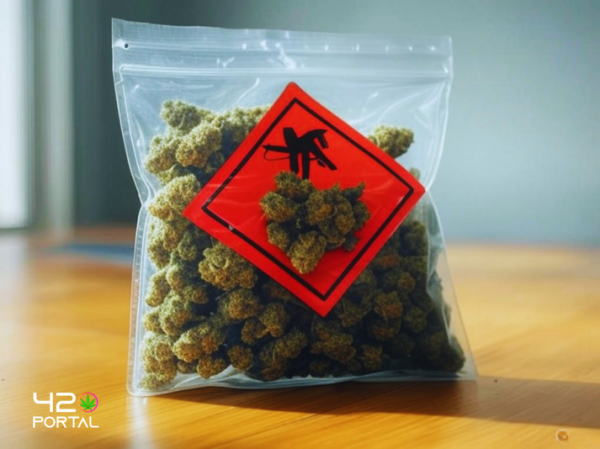Contaminants Cast a Shadow Over California’s Legal Cannabis Industry

04/04/2025
Since recreational marijuana became legal in California in 2018, the state has emerged as a powerhouse in the cannabis industry, generating billions in revenue and offering consumers a vast selection of products, from dried flower to edibles and vape cartridges. Marketed as a regulated, safe alternative to the black market, California’s legal cannabis was intended to set a gold standard.
However, recent findings reveal a troubling underside: Contaminants such as pesticides, heavy metals, and mold are infiltrating the supply chain, posing risks to unsuspecting buyers.
The state established rigorous testing protocols to safeguard consumers, requiring licensed laboratories to screen for everything from potency to harmful residues before products hit shelves. In theory, this system should catch tainted batches. Yet, gaps are emerging. Some cultivators, squeezed by intense competition, resort to prohibited chemicals to increase yields or combat pests.
Others operate on land unknowingly contaminated by decades of industrial activity, allowing toxins like lead or arsenic to leach into plants. Even the testing process isn’t foolproof—labs, under pressure to approve products quickly, have been accused of lax standards, prompting calls for stricter enforcement.
For consumers, the implications are serious. Products that appear clean and professionally packaged may contain traces of fungicides, bacteria, or other hazards. Health experts caution that inhaling contaminated cannabis could trigger respiratory problems or allergic reactions, particularly among frequent users. Edibles, too, can harbor concentrated toxins, turning a seemingly harmless treat into a potential health concern.
The industry isn’t without hope. Lawmakers are exploring tighter regulations, and some producers are embracing organic methods and transparency to build trust. Still, the burden falls partly on consumers to stay informed—asking retailers for lab results or researching brands could make a difference. California’s legal cannabis market promised safety and reliability, but in 2025, it’s evident that vigilance is still required. What was billed as a regulated triumph is, for now, a work in progress.
Reference
However, recent findings reveal a troubling underside: Contaminants such as pesticides, heavy metals, and mold are infiltrating the supply chain, posing risks to unsuspecting buyers.
The state established rigorous testing protocols to safeguard consumers, requiring licensed laboratories to screen for everything from potency to harmful residues before products hit shelves. In theory, this system should catch tainted batches. Yet, gaps are emerging. Some cultivators, squeezed by intense competition, resort to prohibited chemicals to increase yields or combat pests.
Others operate on land unknowingly contaminated by decades of industrial activity, allowing toxins like lead or arsenic to leach into plants. Even the testing process isn’t foolproof—labs, under pressure to approve products quickly, have been accused of lax standards, prompting calls for stricter enforcement.
For consumers, the implications are serious. Products that appear clean and professionally packaged may contain traces of fungicides, bacteria, or other hazards. Health experts caution that inhaling contaminated cannabis could trigger respiratory problems or allergic reactions, particularly among frequent users. Edibles, too, can harbor concentrated toxins, turning a seemingly harmless treat into a potential health concern.
The industry isn’t without hope. Lawmakers are exploring tighter regulations, and some producers are embracing organic methods and transparency to build trust. Still, the burden falls partly on consumers to stay informed—asking retailers for lab results or researching brands could make a difference. California’s legal cannabis market promised safety and reliability, but in 2025, it’s evident that vigilance is still required. What was billed as a regulated triumph is, for now, a work in progress.
Reference







